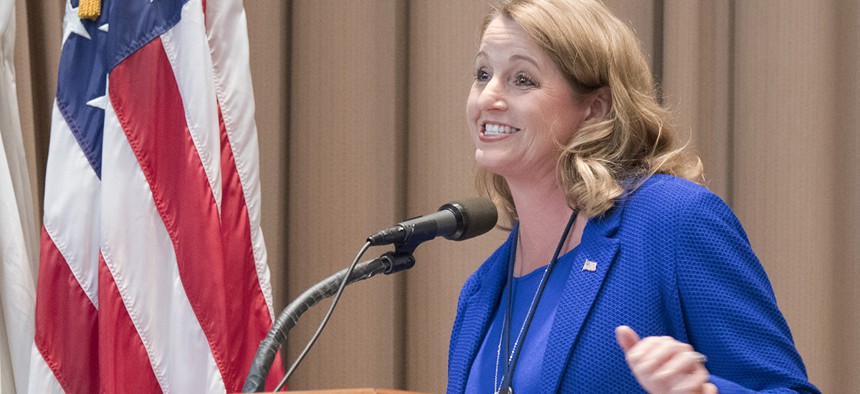What the Federal CIO Thinks a CIO Should Be

federal CIO Suzette Kent GSA
Being a technologist is not enough for government CIOs, according to Suzette Kent. They need to evolve.
The role of the chief information officer is changing—as any government CIO will tell you. This is as it should be, according to federal CIO Suzette Kent, who said the modern CIO must have accountability, authority and an expanded skill set not seen in the past.
In government, “the CIO used to have a very specific set of responsibilities and they were more about hardware and infrastructure,” Kent said during a keynote at Thursday’s Foreign Affairs Live, hosted by Foreign Affairs and the Advanced Technology Academic Research Center.
“They were the people who made your PCs work and your applications work and they took care of the network,” she said. “Today, the CIO is the leader who puts mission-critical tools in the hands of the workforce. The CIO is the person who has been commanded to plan ahead many years. They’re the driver of innovation across the organization. And, together with their [chief information security officers] and their cyber team, they’re actually protecting our agencies and their most important assets: the data.”
To handle these new responsibilities, modern government CIOs need to evolve, she said, pointing to the three pillars of accountability, authority and skill set.
The first—accountability—has already been established through legislation like the Federal IT Acquisition Reform Act.
“Whether you say FITARA or the OMB memos that my team likes to put out, actions, recently, have mandated that the CIO is accountable,” Kent said. “And in the legislation, it specifically says, ‘responsible for failure.’ So, the accountability is there.”
The second—authority—has been slower to adopt. Despite legislative mandates, many CIOs do not have power over the IT budgets and workforce for which they are being held accountable. They also don’t always have a voice in setting agency priorities, even when IT is critical to the mission.
“When I say ‘authority,’ I mean things like setting the technology direction; authority to hire the skills that are needed; authority to manage the budget; and the opportunity to sit at the table with agency and government leadership to collaboration and contribute in how we make decisions about how we’re achieving mission,” Kent said.
Kent said more agency CIOs are now reporting directly to agency leadership than ever before but that trend needs to continue.
“We need to close the gap between the people who are setting the vision and the people who have to deliver on that vision—the people who are owning the tools to make that vision happen,” she said.
This evolution has already occurred in the private sector, Kent said, as CIOs are now a standard part of the leadership team in most mature organizations.
The third change—expanding CIO skill sets beyond technology to management and leadership—is the most dramatic, according to Kent. That will come with training and picking CIOs who are strong leaders, even if they’re not technologists.



